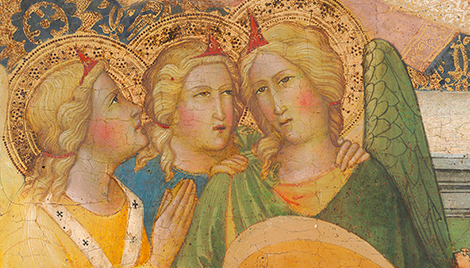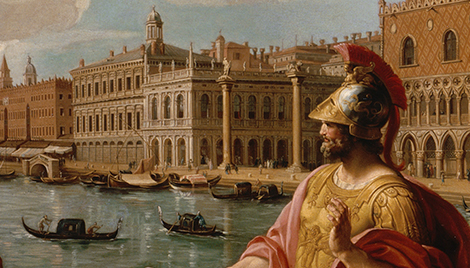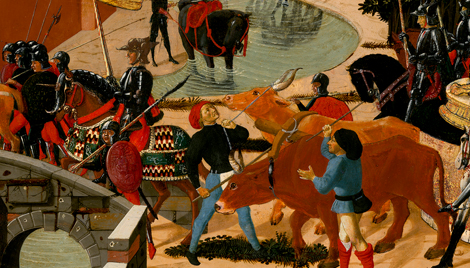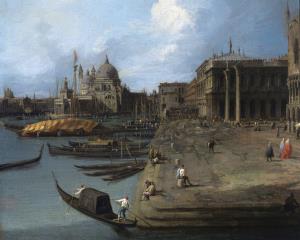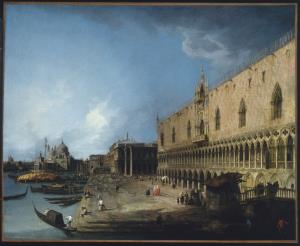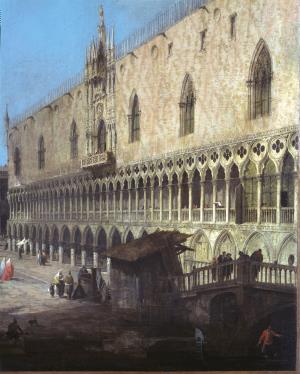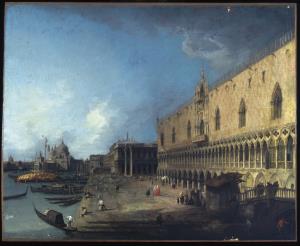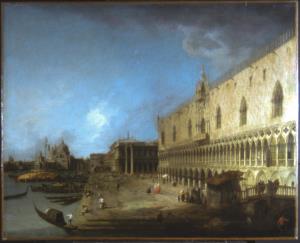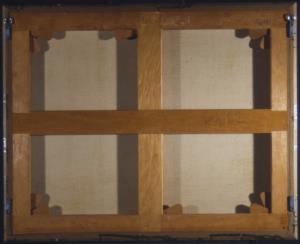View of the Molo, Venice
View of the Molo, Venice
- Artist
- Canaletto
- Also Known As
- Antonio Canal
- Artist Dates
- 1697-1768
- Artist Nationality
- Italian
- Title
- View of the Molo, Venice
- Date
- 1730
- Medium
- oil on canvas
- Dimensions
- 67.3 x 83.2 cm (26-1/2 x 32-3/4 in)
- K Number
- K252
- Repository
- Columbia Museum of Art
- Accession Number
- CMA 1954.44
- Notes
Provenance
Gurr Johns & Co., Ltd.. London; (sold, Christie's, London, 12 June 1931, no. 59). (Count Alessandro Contini Bonacossi [1878-1955] Rome-Florence); sold to Samuel H. Kress [1863-1955] on 23 June 1933; gift 1939 to the National Gallery of Art; deaccessioned 1952 and returned to the Samuel H. Kress Foundation; gift to Columbia Museum of Art in 1961, no. CMA 1954.44
Catalogue Entry
Canaletto
View of the Molo, Venice
K252
Columbia, S.C., Columbia Museum of Art (54-402/25), since 1954.(1) Canvas. 26 1/2 X 32 3/4 in. (67.3 X 83.2 cm.). Fair condition except for abrasion in sky; cleaned 1953. Among the versions of this scene is one now in the Kress Collection at El Paso (K2174, Fig. 312), which probably dates in the early 1730's, is composed from a viewpoint nearer the Piazzetta, and differs from K252 in types and arrangement of figures and other details. Much closer to K252 in composition is a version in the Pinacoteca, Turin, which is believed to date a little before 1730. There the viewpoint, from the Ponte della Paglia, at the extreme right, is the same as in K252, and figures, boats, and even size of canvas correspond very closely. It would seem that one of the two paintings is a copy of the other, or that both are copies of a third, now lost. The unusual appearance of K252 under X-ray tends to support the opinion that this painting may be by a follower rather than by Canaletto himself.(2) Provenance: Private Collection, England (sold anonymously, Christie's, London, June 12, 1931, no. 59, as Canaletto;(3) bought by Holland). Contini Bonacossi, Rome. Kress acquisition, 1933 – exhibited: National Gallery of Art, Washington, D.C. (234), 1941-52;(4) after entering the Columbia Museum of Art: 'Canaletto and Bellotto,' Berkshire Museum, Pittsfield, Mass., Aug. 2-31, 1960, no. 14 of catalogue, as Canaletto.
References
(1) Catalogue by W. E. Suida, 1954, p. 59, and by A. Contini Bonacossi, 1962, pp. 101 f, as Canaletto. (2) The Turin painting has been attributed to Bellotto by G. Ferrari (pl. 43 of the 1924 catalogue of the exhibition 'La Pittura Italiana del Seicento e del Settecento,' Palazzo Pitti, Florence,1922; the Turin painting was not included in the 1922 edition of the catalogue); W. G. Constable (Canaletto, vol. II, 1962, no. 86) attributes it to Canaletto, shortly before 1730, and K252 (Constable's no. 86a) tentatively to an early nineteenth-century imitator. H. Tietze and E. Tietze-Conrat (in ms. opinion) considered K252 superior to the Turin version. K252 has been attributed to Canaletto (in ms. opinions) by G. Fiocco, R. Longhi, R. van Marle, F. M. Perkins, and A. Venturi (see also note 1, above). (3) The measurements and description in the catalogue are appropriate to K252, and Constable (loc. cit. in note 2, above), judging from a reproduction of the painting sold as no. 59 in the Christie sale, thought the entry probably referred to K252. (4) Preliminary Catalogue, 1941, p. 32, as Canaletto.

